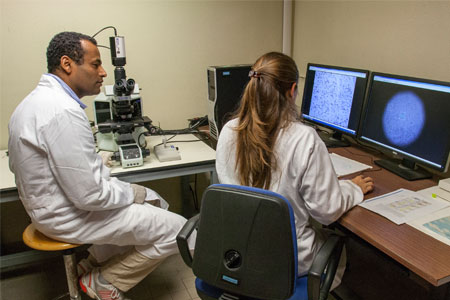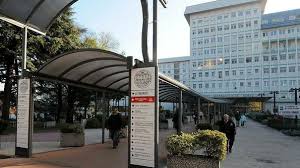- Autori:
-
Sabella, Giovanna; Centonze, Giovanni; Maisonneuve, Patrick; Grillo, Federica; Lagano, Vincenzo; Garzone, Giovanna; Pardo, Carlotta; Filugelli, Martina; Mietta, Alessia; Simbolo, Michele; Fabbri, Alessandra; Mangogna, Alessandro; Prinzi, Natalie; Pusceddu, Sara; Rolli, Luigi; Bercich, Luisa; Grisanti, Salvatore; Benvenuti, Mauro Roberto; Pastorino, Ugo; Roz, Luca; Scarpa, Aldo; Berruti, Alfredo; Capella, Carlo; Milione, Massimo
- Titolo:
-
Oncocytic and spindle cell typical carcinoids of lung: different immunophenotype and biological behavior
- Anno:
-
2025
- Tipologia prodotto:
-
Articolo in Rivista
- Tipologia ANVUR:
- Articolo su rivista
- Lingua:
-
Inglese
- Formato:
-
Elettronico
- Referee:
-
No
- Nome rivista:
- THE JOURNAL OF PATHOLOGY. CLINICAL RESEARCH
- ISSN Rivista:
- 2056-4538
- N° Volume:
-
11
- Numero o Fascicolo:
-
2
- Intervallo pagine:
-
1-11
- Parole chiave:
-
immunohistochemistry; oncocytic cell; spindle cell; typical carcinoid
- Breve descrizione dei contenuti:
- : Pulmonary typical carcinoids (TCs) are uncommon, well-differentiated neuroendocrine tumors of the lung that do not exhibit necrosis and have fewer than two mitoses per 2 mm2, as defined by the current World Health Organization classifications. Despite their low-grade status and favorable prognostic impact, the protein expression profile and morphological characteristics associated with tumor progression and metastatic spread remain largely unidentified. Oncocytic and spindle cell histological variants are acknowledged for their role in differential diagnosis, though their clinical significance remains a topic of debate. We centrally reviewed a multicenter series of 297 TCs to identify cases of oncocytic and spindle cell variants. We examined associations with clinicopathological features and immunohistochemical markers (orthopedia homeobox protein, thyroid transcription factor 1, mammalian achaete-scute homologue 1, somatostatin receptor 2A, Ki-67, anti-mitochondria, and S100); these data were further related to disease-free survival (DFS), overall survival, and cancer-specific survival (CSS). Our analysis identified oncocytic TCs (n = 36, 12.1%), spindle cell TCs (n = 55, 18.5%), and ordinary TCs, defined as those without either variant or with variants that were not prominent (n = 206, 69.4%). Interestingly, ordinary tumors were associated with a higher number of tumor-related deaths (p = 0.01) compared to the other histological variants. Additionally, patients with spindle cell morphology had longer CSS compared to those with ordinary morphology (p = 0.04). Parameters such as histological variant, age, tumor stage, and Ki-67 were significantly linked to DFS on multivariable analysis, even after accounting for differences between centers. In conclusion, oncocytic, spindle cell, and ordinary TCs are linked to distinct clinicopathological characteristics and exhibit varying clinical outcomes.
- Id prodotto:
-
144589
- Handle IRIS:
-
11562/1156869
- ultima modifica:
-
14 maggio 2025
- Citazione bibliografica:
-
Sabella, Giovanna; Centonze, Giovanni; Maisonneuve, Patrick; Grillo, Federica; Lagano, Vincenzo; Garzone, Giovanna; Pardo, Carlotta; Filugelli, Martina; Mietta, Alessia; Simbolo, Michele; Fabbri, Alessandra; Mangogna, Alessandro; Prinzi, Natalie; Pusceddu, Sara; Rolli, Luigi; Bercich, Luisa; Grisanti, Salvatore; Benvenuti, Mauro Roberto; Pastorino, Ugo; Roz, Luca; Scarpa, Aldo; Berruti, Alfredo; Capella, Carlo; Milione, Massimo,
Oncocytic and spindle cell typical carcinoids of lung: different immunophenotype and biological behavior
«THE JOURNAL OF PATHOLOGY. CLINICAL RESEARCH»
, vol.
11
, n.
2
,
2025
,
pp. 1-11
Consulta la scheda completa presente nel
repository istituzionale della Ricerca di Ateneo 








